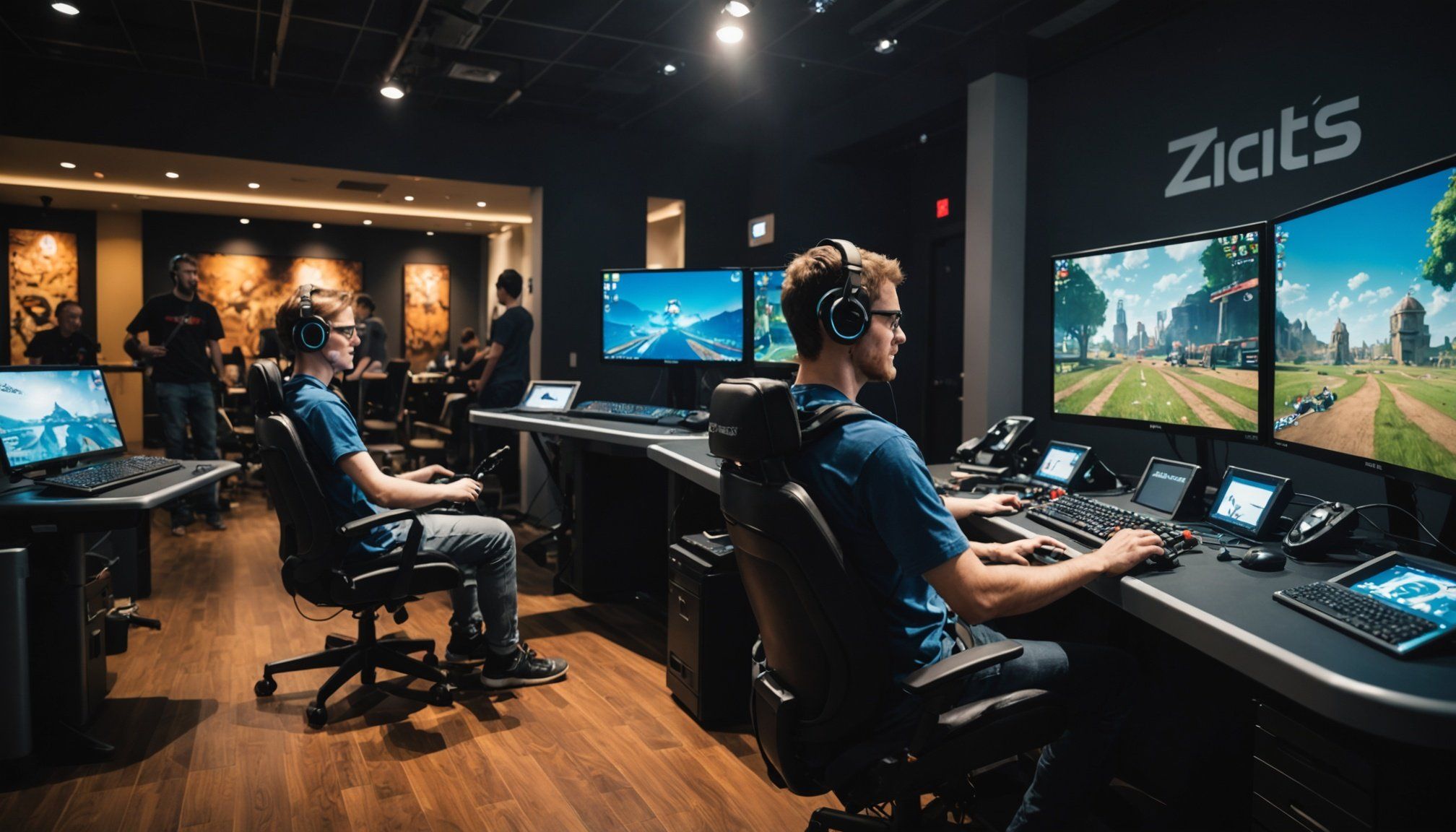The Importance of Gaming Accessibility
Gaming Accessibility plays a crucial role in shaping the Player Experience by ensuring that everyone, regardless of their abilities, can enjoy and participate in gaming. The concept of Inclusive Design underlines the importance of creating games accessible to diverse players. This design approach can greatly enhance player engagement and satisfaction by removing barriers and offering personalised experiences that cater to specific needs.
Accessibility in gaming has significant implications for player engagement. It allows players with disabilities to fully immerse themselves, often resulting in increased satisfaction. Integrating accessibility into games has proven to keep players more engaged and can lead to longer gaming sessions.
Also to see : Safeguard your gaming account: tips to prevent hacking and unauthorized access
Surveys and statistics underscore the demand for accessibility features. For instance, a recent study revealed that a significant portion of the gaming community views accessibility features as essential. Many developers are now prioritising enhancements such as subtitles, colour adjustments, and control customisation based on player feedback. These elements not only cater to disabled gamers but also enhance the overall gaming experience for everyone, illustrating how crucial gaming accessibility has become in recent years.
Current Accessibility Features in Gaming
In today’s gaming world, Accessibility Tools and Adaptive Technologies play a vital role in making games more inclusive for everyone. These features are designed to cater to players with different needs, ensuring an enjoyable Player Experience regardless of their abilities.
Topic to read : Enhance your gaming experience: top tips for crystal clear audio quality
Overview of Common Accessibility Features
Many games now include features such as subtitles, colour blindness options, and customisable controls. These adjustments support a wide range of players, providing essential accessibility for those who require additional support to fully engage with gaming content. Subtitles make dialogue and audio cues accessible to hearing-impaired players, while colour blindness options adjust visual cues to accommodate those with varying visual impairments. Customisable controls offer flexibility in gameplay, allowing players to tailor the gaming experience to their specific needs.
Technologies Enhancing Gameplay
The introduction of adaptive hardware has been transformative. Specialised controllers, such as those designed for limited mobility, and voice recognition software, expand accessibility beyond software adjustments, making gameplay possible for those with physical disabilities. These technologies not only enhance the individual experience but also ensure inclusivity across broader player demographics. By integrating these tools and technologies, gaming becomes a more welcoming and engaging platform for all.
Personal Testimonials from Disabled Gamers
Personal experiences of disabled gamers offer a window into how Player Experiences are profoundly affected by Gaming Accessibility. Many share narratives where overcoming design barriers was initially daunting. However, the positive impact of Inclusive Design becomes evident as players describe the immense satisfaction that accessibility features bring to their gaming experiences. By integrating these features, players report an increase in immersion and enjoyment, highlighting the importance of adaptable interfaces.
Resistance to accessibility features still exists in some gaming communities. Nonetheless, testimonials overwhelmingly show a trend towards acceptance, as individuals appreciate the inclusivity these designs foster. Gamers frequently voice how meeting Player Experiences needs transforms gaming from a challenging task to a fulfilling pastime. Community forums are filled with discussions praising subtitles, adjustable difficulty, and remappable controls, emphasising the need for constant developer engagement with disability narratives.
Analysing feedback from these narratives showcases the collective desire for wider accessibility adoption, encouraging developers to create more inclusive environments. Players find that Gaming Accessibility not only enhances personal enjoyment but fosters a sense of belonging in the gaming world, uniting diverse individuals under shared experiences. This highlights the transformative power of accessibility in gaming.
Social and Emotional Benefits of Enhanced Accessibility
Accessible gaming isn’t merely about overcoming physical barriers; it profoundly impacts social and emotional aspects as well. By fostering social inclusion, accessible games enable players to form meaningful connections. When players engage in inclusive gaming environments, they often find themselves part of vibrant communities where they can share experiences and forge friendships. These connections are key to enriching the overall Player Experience.
The emotional impact of accessible gaming shouldn’t be understated. Many players experience significant boosts in emotional well-being when games accommodate their needs. For instance, the joy of overcoming challenges through Adaptive Technologies or experiencing a game tailor-fit through Inclusive Design can enhance self-esteem and motivation. This emotional uplift translates into a more gratifying and immersive engagement with gaming.
Studies affirm that accessible gaming environments promote Community Engagement. Gamers often gather in forums and social platforms to discuss their experiences with accessible features. These interactions further solidify the sense of belonging and empowerment players experience. Moreover, the collective enthusiasm from community feedback underscores the necessity for continuous innovation in accessibility, affirming its critical role in modern gaming landscapes.
Case Studies and Real-World Examples
Case Studies of real-world applications in gaming accessibility demonstrate the industry’s strides towards inclusivity. By analysing these instances, one can better understand how these implementations benefit both players and developers. Certain groundbreaking games have become notable for pioneering accessibility. For example, The Last of Us Part II is praised for its comprehensive accessibility settings, tailored by involving disabled gamers in its development process.
Notable Games Pioneering Accessibility
Exploring accessible games, Celeste stands out, offering features like adjustable difficulty levels, which empower players to customise their experiences. These games set benchmarks by addressing diverse needs through detailed design considerations.
Developer Initiatives for Inclusivity
Developers are increasingly prioritising inclusivity. Naughty Dog, among others, actively engages with the disabled community for feedback, ensuring its games offer enhanced accessibility. These initiatives showcase a commitment to breaking barriers and expanding reach.
Industry Partnerships Advancing Accessibility
Collaborations between gaming companies and disability advocacy groups mark a significant trend. For instance, Xbox’s partnerships with groups like SpecialEffect result in innovative controllers, broadening the horizons for accessible gaming. These partnerships ensure practical solutions align with user needs, validating industry commitment to diversity in the player base.
Future Trends in Gaming Accessibility
In the ever-evolving landscape of gaming, future innovations in Gaming Accessibility promise to revolutionise the Player Experience. Emerging Industry Trends reflect increasing prioritisation of Accessible Gaming Technology.
One principal area is the development of Future Innovations such as AI-driven personalisation, which will adapt gaming environments to individual players’ capabilities. This technology, by anticipating one’s specific needs, can create a more seamless and inclusive experience. Additionally, haptic feedback advancements aim to ensure immersive engagement for all players, offering tactile responses that transcend traditional controller feedback.
Social responsibility plays a pivotal role in driving these trends. Companies are being urged by global players to incorporate Inclusive Design principles, ensuring diverse audiences can participate fully. Increasingly, gamers themselves expect inclusivity, pushing developers to design experiences that embrace this new societal norm.
Evolving player expectations will undeniably influence how future games are developed. As the community becomes more vocal about diverse needs, the industry must respond by delivering games that are not only accessible but also adaptable and responsive. This shift will be instrumental in shaping the next generation of gaming experiences, creating inclusive adventures for everyone involved.











